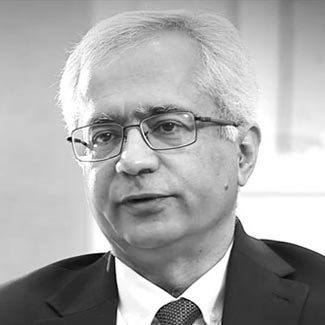
I said earlier that digital is not a quick fix, and it is not. To undergo the change that is necessary, we have to be robust in our approach and confident with the demands we make of new technologies. This means asking the right questions.
The digital technologies that have been changing our personal lives over the last several years are offering a tantalizing promise to our industry.
At Schlumberger, we have been in the business of developing and leveraging new technologies, and applying them to E&P for a long time—to make the industry safer, faster, better.
Today, we can pick from a diverse range of digital technologies such as AI, machine learning, high-performance computing, big data, analytics, and cloud. Each can be useful to our and our customers’ systems and workflows.
But E&P is complex. Not everything that works elsewhere, works in this industry in the exact same way. The software and systems we use are some of the most complex in the world—without them you could not drill to 20,000 feet below sea level, let alone bring that oil and gas to market economically. Our systems are there when one big or a million small, but crucial decisions are made. They are often mission-critical.
Ours are running systems, so let’s change them with care.
We are not an industry that changes the way it works just for the sake of change. We change when it makes sense. And it does.
In E&P, digital cannot be just a quick fix. We are not an industry that changes the way it works just for the sake of change. We change when it makes sense. And it does. Right now. So how to change? Well, let’s start with how not to:
Not by chasing incremental efficiency improvements, not by simply shifting your whole IT estate into the cloud to save infrastructure costs.
Not by giving a highly skilled, expert workforce generic tools to perform the same tasks, in the same way, just digitally.
And finally, not by turning the whole industry upside down in one go.
Instead of using digital tools to make existing work more efficient, we must aim higher: to justify disruption with exceptional gains. We must transform the work itself. To do that, we have to work in partnership with our customers, —creating new workflows the shape of which we cannot yet know.
We have to respect the know-how, knowledge, people, technology, engines, and routines that currently run our industry safely and securely. They can be enhanced, augmented, evolved, even enabled, —until something entirely new emerges.
So how do you go about achieving the kind of fundamental change the industry needs, in the environment we are operating in? This is the challenge that has been occupying myself and my teams across Schlumberger for several years.
Working at our technology centers around the world, our innovation center in Silicon Valley, and in partnership with our customers, we have been looking at how we can take the many digital technologies available and re-engineer them for our industry.
The first conclusions we reached was that this process can only happen in close collaboration with our customers. It is their individual needs that we will apply digital technologies to and create the workflows of tomorrow.
And instead of switching off our old ways of working and switching on new ones, we will evolve the technology the industry is using today to create completely new connections. The goal: domain-driven digital workflows that allow intelligent execution of processes.
We have started by digitally enabling the technology, hardware, and software we have already, joining them up intelligently. You will see more of that.
Knowing where it makes sense to automate, we will strip out all the mundane routine tasks still clogging up our desks, freeing up time for value-added work and thinking.

I said earlier that digital is not a quick fix, and it is not. To undergo the change that is necessary, we have to be robust in our approach and confident with the demands we make of new technologies. This means asking the right questions.
Ask: Will this liberate my data, insight and knowledge, and ensure they are all shared better? Will I have greater visibility of what is happening across the organization?

Will it help me not just when I have a lot of data, but also when I have very little data? For instance, will it only work if I have got data from thousands of wells, or will the system be able to support my decisions on the basis of only a handful?
Will it allow me to simulate and predict all the most challenging scenarios and identify the real business opportunities fast?
Will it allow me not just to do things better and faster, but to do things I was unable to do before?
The prospect of achieving this vision is graspable. Both in terms of the digital technologies and the potential that is latent across the E&P lifecycle.
If evolution sounds too slow an answer to the urgent pressures the industry is currently feeling, then consider this: The technologies we are working on at Schlumberger right now are designed to facilitate rapid adoption, to encourage connections, to make it easy to work better, and do more. Once started, this will accelerate fast.
Our approach is born out of a deep understanding of what the individual user is trying to achieve, the science they are using to achieve it, and how it all fits into the wider workflow and the bigger picture. That is what will drive adoption—as will the outcomes.
Very soon, users of our technologies will log in in the morning and it will feel like nothing has changed, but things will just be easier and faster.
Very quickly, we will be able to show drastically contracted project timelines. Faster cycles and circular collaboration will mean that every single well will be demonstrably better than all the ones drilled before. It will rock your world, but it will not come as a shock.
Very soon, users of our technologies will log in in the morning and it will feel like nothing has changed, but things will just be easier and faster. Suddenly, more will be possible.
And that is the power of evolution unleashed. No time to be impatient. ■

This is the first in a limited series of executive insight pieces in which industry thought leaders will share experiences and views on the future of E&P. Specifically, the series looks at how the various domains in the E&P lifecycle can grow and develop by taking full advantage of digital technologies and data.